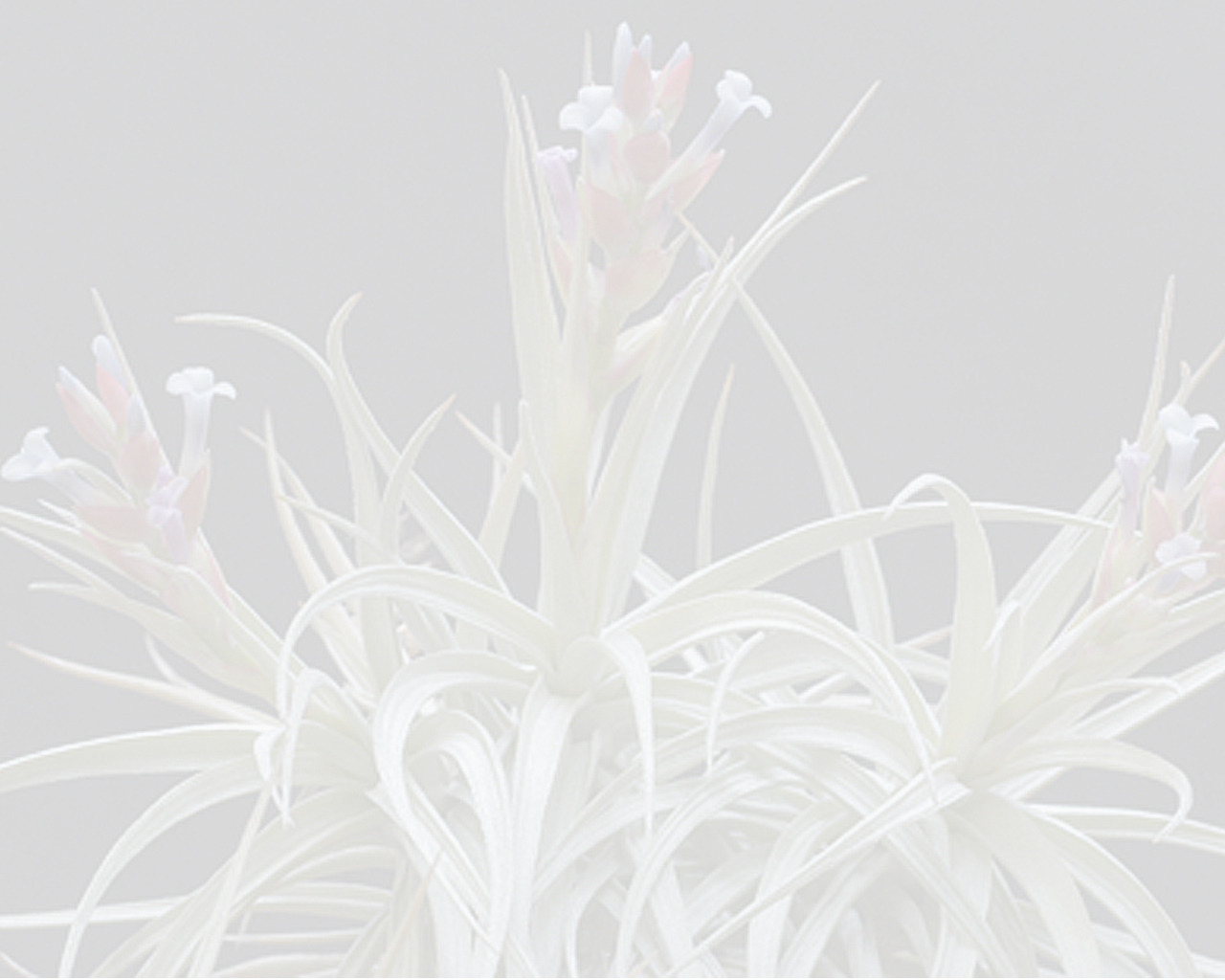

 Tillandsia crocata var. tristis Rauh[as Tillandsia crocata var. tristis Rauh]
Tillandsia crocata var. tristis Rauh[as Tillandsia crocata var. tristis Rauh]Diagnose: —Plantae solitariae breviter caulescentes, florens 20-40 cm altae; caulis simplex vel ramosus, plus minusve 8 cm longus, 0,5 cm diametiens. Folia plus minusve 10, disticha. Vagina usque ad 2 cm longa, 1,4 cm lata, laete viridis, valde nervata glabra. Laminae rectangulariter patentes vel recurvatae, usque ad 12-18 cm longae, lineali-subulatae, longe attenuatae, involutae, 2-5 mm diametientes, dense cano-lepidotae; lepides excentricae; scapus inflorescentiae tenuissimus, 10-15 cm longus rectus vel saepe geniculatus, dense cano-lepidotus; phyllis scapi 0-2 subfoliatis. Inflorescentia semper simplex laxe disticha, usque ad 6 cm longa, 0,5-1 cm lata, 3-vel 4-flora, axis valde lepidotus applanatus erectus vel flexuosus. Bracteae florales erectae, plus minusve 1,5-2 cm latae tam longae vel breviores quam sepala, ecarinatae basibus rhachim amplectentes glaucae, dense cano-lepidotae. Flores breviter pedunculati erecti. Sepala posteriora carinata breviter connata dense cano-lepidota. Petala minutissima explanata 2 x 2 mm metientia fere atrobrunnea 1 (-1,5) cm longa, 4 mm lata apicibus revoluta atrobrunnea tum stria media lurido-lutea. Stamina cum stylo profunde inclusa. Observations: —Tillandsia crocata (E. Morren) Baker by W Rauh in Trop Subtrop Pflanz 43: 15-19. 1983
In the past few years through the collectings of Mrs. D. Muhr, Argentina and H. Hromradnik, Austria, remarkable T. crocata - forms have become known, and the knowledge of the inflorescence, flowering and petal colour deviates so strongly from the T. crocata noted up to now, that these must be treated as separate varieties. Therefore, we have var. crocata and var. tristis described as a new variety.
Tillandsia crocata (E. Morren), Baker, Journ. Bot. London 25, 214, 1887,
Type: Lietze s. n. Rio de Janeiro, Brazil, 1879. , However none of the existing plants at that time would have been made the Type by Morren,
var. crocata
Inflorescence simple, complanate, lanceolate to elliptical, acuminate, 1 - to 6-flowered spike; floral bract ± imbricate; Petal to 2 cm long, 6-8 mm wide (fig. 8), shiny yellow, more rarely dark-orange-coloured or green.
Range: on rocks, between 875 and 2650 m high, from Bolivia to South Brazil, Argentina and Paraguay.
var. tristis f. tristis
Flowers insignificant, platte only 2 x 2 mm large, uniformly dark, (fig. 9).
Flowers opening only in the morning.
Type: D. MUHR T1/8B = B.G.H. 46 737
Habitat and Range: without exact location, El Aquilar, Prov. Juju, Argentina.
var. tristis f. major Rauh
Plant larger in all parts. Platte of the petals dark brown with dirty yellow midline, 1,5 cm long, 4 mm wide, wide with bent over, blunt tips (fig.10);
Flowers open for several days.
Type: B.G.H. T. 1.269, leg. D. Muhr, Argentina s.n.
Habitat and range: without more exact location, El Aquilar, Prov. Juju, Argentina.
Both forms of var. tristis in HEID. , The small-flowered form, (f. tristis) is from the Cactus firm SPI (Sudpflanzenimport, Wiesbaden) being traded under the invalid name T. diabolica.
Also the var. crocata is quite variable regarding size of spike, number of flowers and flower colour. The following deviant forms are cultivated in the botanical garden of the University Heidelberg:
Rauh 48 801: dwarf-form, flowering only to 10 cm high. Inflorescence 1-flowered [Vila Velha, Brazil; fig. 8, right, (left plant)].
Dr. Rutschmann, Basel; B.G.H. No. T1.204: very large form with 6 - to 7-flowered inflorescence and fragrant, dark-orange-coloured flowers (Brazil) without location; (fig. 8, right).
Dr. Hromadnik, Kritzendorf, Austria 5048 (= B.G.H. 50 975,: flowers green, Bolivia, Tarija.
However, the differences lie within the variations of var. crocata , so it is not necessary to describe them as separate varieties.Edited from (12-10-2016): Trop. Subtrop. Pflanzenw.. (protologue) Bromelienstudien. I.Neue und wenig bekannte Arten aus Peru und anderen Ländern .